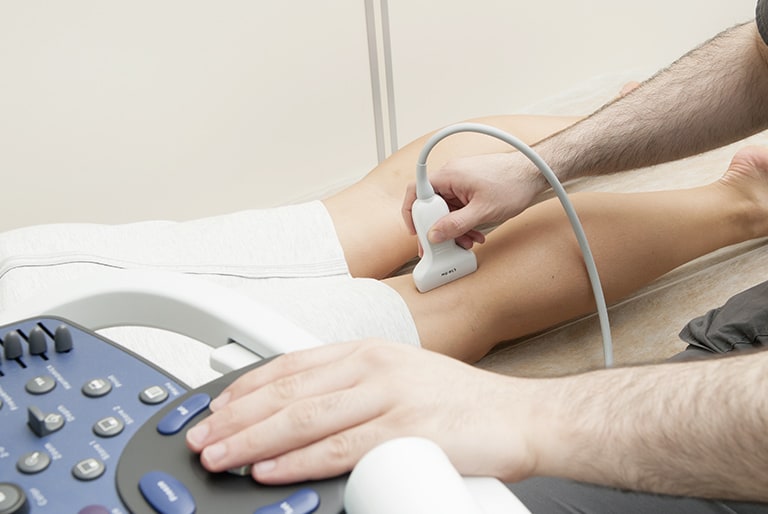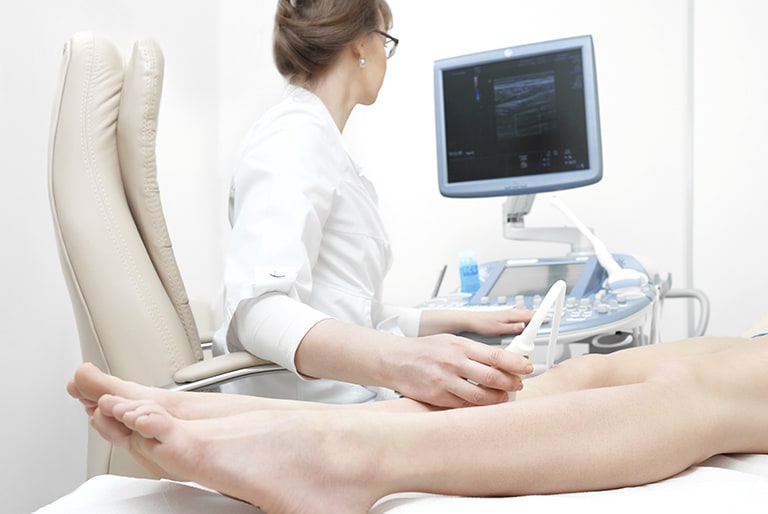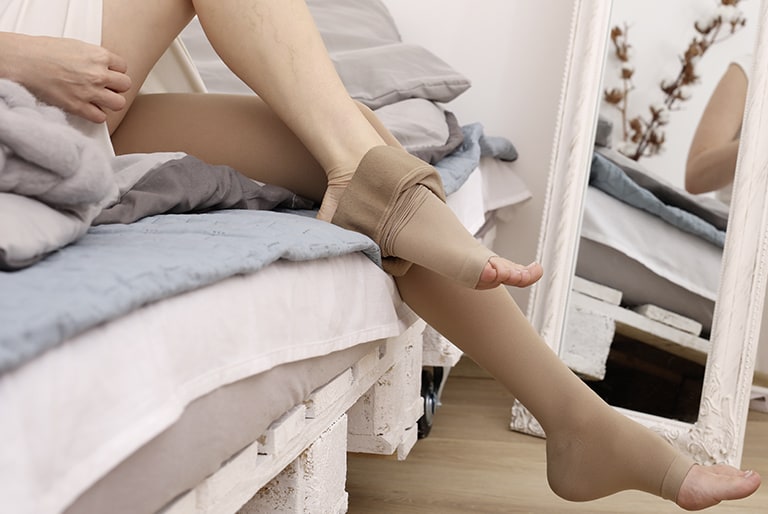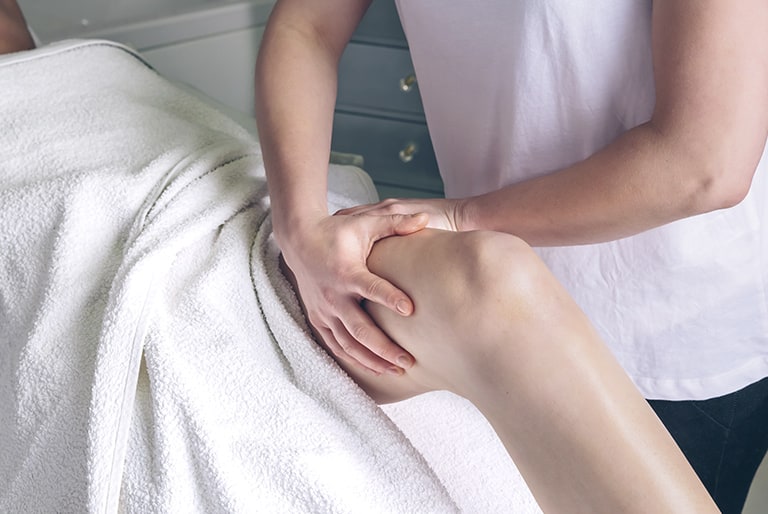
Diagnosis of venous diseases
Spider veins, varicose veins, venous insufficiency – venous disorders are widespread throughout the population. Quite often they cause no symptoms. But if your legs swell up frequently, hurt or itch, it is necessary to visit the doctor immediately, in order to diagnose the cause and to treat it. Here you can learn where and how you can have your veins examined.
How can I recognise a vein disorder?
Are your legs swollen up simply because of the heat or is venous insufficiency the cause? Venous disorders are widespread, but many people do not know that they have a vein problem. While varicose veins are usually clearly visible, venous insufficiency often remains undetected. Despite that, it can still lead to life-threatening thrombosis and a pulmonary embolism. That is why you be careful if you have any of the following symptoms:
- Heavy legs
- Swelling on your legs
- Painful legs
- Itchy legs
- Water in the legs
- Nightly calf cramps
- Spider veins
- Varicose veins
Your doctor can provide a diagnosis using different procedures and recommend a suitable therapy for your vein disease.
Which doctor is responsible for your veins?
Anyone who wishes to have their veins examined should choose a day when the symptoms arise. If, for example, your legs only swell in the summer heat, it would make sense to visit the doctor on a warm day. That helps the doctor to make a diagnosis.
How are the veins examined?
There are different methods available for diagnosing venous diseases, which can be carried out singularly or in combination:
- Medical history: irrespective of which doctor you visit, first and foremost comes your medical history. In a consultation, the doctor asks about the type of current symptoms, your health history up to now, possible predispositions through your parents, lifestyle, occupation and medicine intake. The more accurate the details, the better a picture the doctor can make of the disease.
- Physical examination: after the consultation comes the physical examination, in which the doctor focuses particular attention to your legs and groin area. They can detect swellings, knots and almost invisible varicose veins by feel. Spider veins, areas of flaky skin, spots and discolouration on your skin also give indications of possible venous diseases. Usually, the patient is standing at first, and is then examined lying down and seated. That way your doctor can determine if blood or water is accumulating in your legs.
- Laboratory analysis: using coagulation factors it is possible to diagnose vein thrombosis in the deep veins using your blood, when otherwise there are hardly any symptoms.
- Ultrasound: there are several procedures when it comes to ultrasound scans, which are used to present the characteristics and functionality of your veins. Scan cross section, Doppler ultrasound, duplex ultrasound These enable the venous system to be well presented; in addition, it is also possible to measure the speed and direction of blood flow. Because with venous insufficiency your blood flows more slowly through your vessels and drops into your legs when you stand or sit. The examination is completely painless.
- Phlebography: phlebography is a kind of x-ray examination. You take a contrast medium beforehand because your veins cannot be distinguished from other tissue. Finally, x-rays are taken of your legs. This enables constrictions and vein thromboses to be better detected. As patients are not allowed to eat or drink for four hours before the examination and the radiation exposure is quite high, phlebography is nowadays only used for a detailed diagnosis which cannot be produced by ultrasound alone.
- Magnetic resonance phlebography: a modern and lower-radiation version of phlebography is magnetic resonance phlebography, which presents veins by using MRI (magnetic resonance imaging). It is rarely used, however.
- CT (Computer tomography): another imaging process which provides a good presentation of your veins is computer tomography. It is used primarily to examine the deeper-lying veins, for example when thrombosis is suspected.
- Venous function test: there are also various methods available for testing the function of your veins and your venous valves: digital photoplethysmography (DPPG), venous occlusion plethysmography, Trendelenburg Test and light reflection rheography. Using congestion or targeted movement, they measure the pressure, speed and efficiency with which your blood is transported through your veins.


